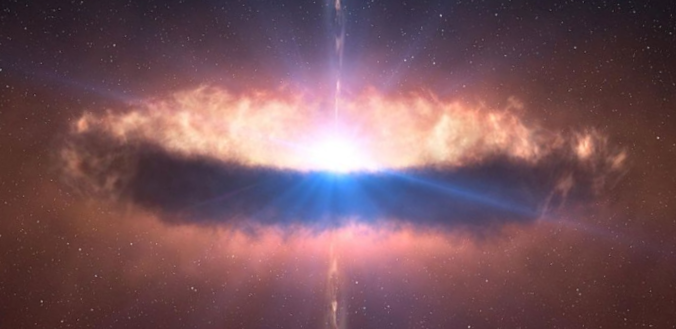
Introduction
Astronomers are continuing to increase our understanding of star formation. Recently, a team of astronomers led by Jimenez-Serra published a paper reporting their observations of a disk of gas and dust around a young massive star.
In the paper, the astronomers report observations of warping indicating orbiting planets or a binary system as well as strong radio emissions and winds of ionized gas.
Low mass star formation
We know fairly well how stars less than 8 times the mass of our sun form. Before stars begin nuclear fusion at their centers and become main-sequence stars, they first become pre-main-sequence stars. Pre-main-sequence stars come in a number of varieties. They can be T-Tauri stars, Herbig Ae stars and Herbig Be stars.
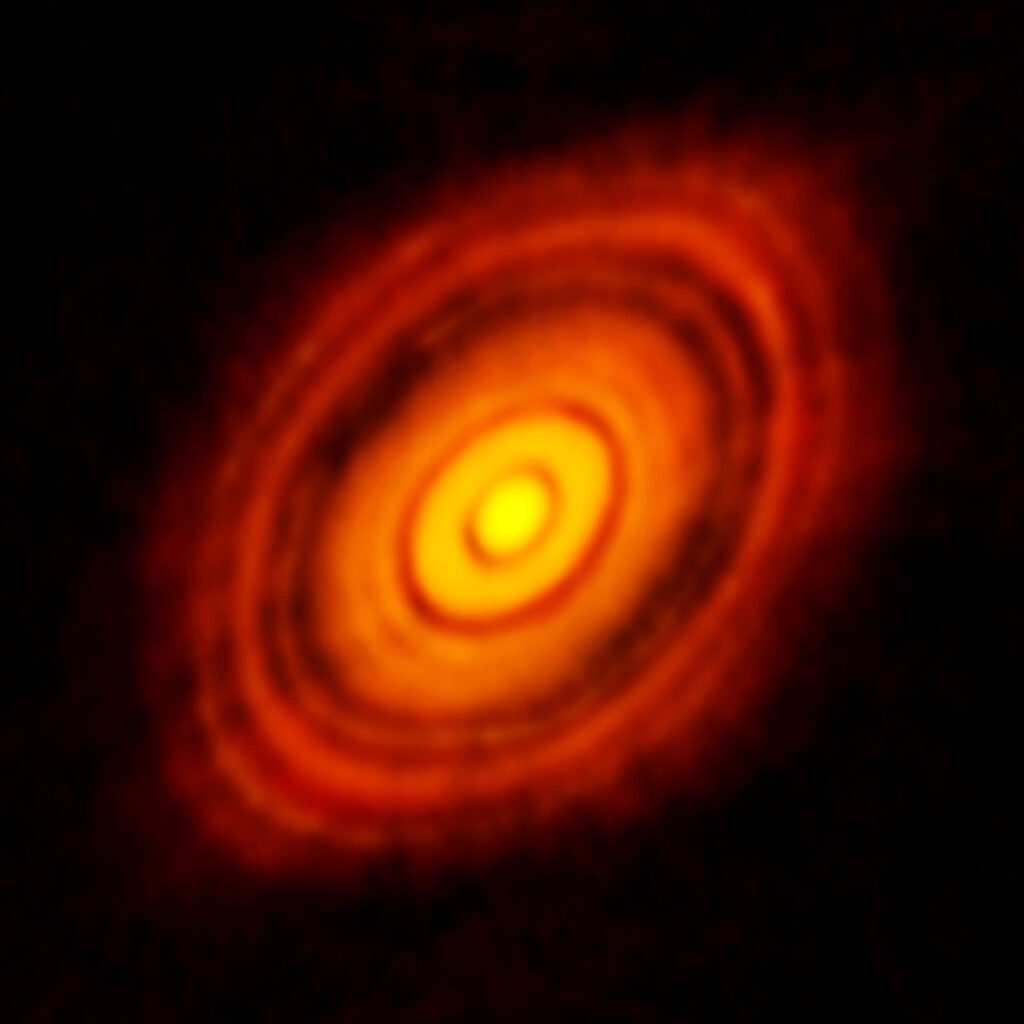
In their pre-main-sequence stage, stars lighter than 2 solar masses like our sun become T-Tauri stars while stars between 2 and 8 solar masses become Herbig Ae & Be stars. Astronomers observed these objects and have found evidence of disks of material around them influenced by strong magnetic fields. They have even discovered planets around some of them.
It turns out that low mass stars do not gather matter continuously. Rather, matter falls onto the star in chunks from time to time. When a chunk falls on to a pre-main-sequence star, the temperature of the inner parts of the disk of matter around the star increases. This causes it to brighten temporarily by orders of magnitude.
The problems with massive star formation
As of 2020, we don’t fully understand how stars heavier than 8 solar masses form. The problem is that such stars evolve too quickly. When the gas and dust surrounding them have been blown away, they are well into their main-sequence phase and are no longer undergoing star formation.
Finding details in the disk also allow scientists to know how mass falls on to a forming massive star. This is important as models of star formation say that radiation from massive stars would have blown away all the surrounding gases very early on in their existence. This would stop them from growing to the masses that they have.
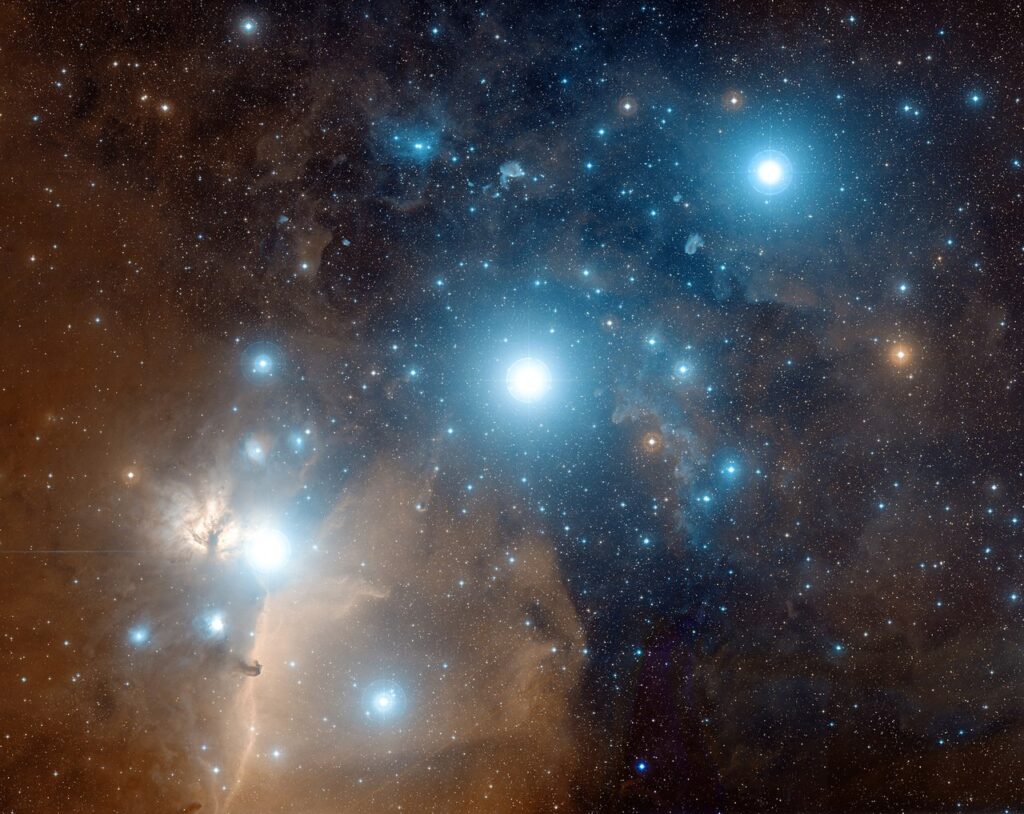
Massive star formation by colliding smaller stars
One idea to get around this problem is that some of the smaller stars collide and merge with each other to form massive stars. If true, planets around massive stars would be rare. This is because stars colliding would cause their planets to be thrown into interstellar space or collide with their stars.
However, the problem with this model is that the density of smaller stars isn’t enough to account for the number of massive stars in any one star cluster.
What we have seen so far with massive star formation
Using infrared and microwaves to see through the dust and gas, scientists are able to find out more about what happens to massive stars before they enter the main-sequence phase. Such observations have so far not revealed much detail. But nonetheless, they have been helpful in getting clues.
We now know that young massive stars also accrete mass in chunks and brighten from time to time. However, unlike low mass stars their increases in brightness are significantly greater.
An uneven shell of gas
This may also confirm an old idea tested by computer simulations in 2009. In this idea, when radiation from the star becomes strong enough to stop gas from falling on to the star, gas further out continues to fall towards it. The result is that gas builds up in a shell surrounding the star. This shell eventually becomes uneven. In certain parts of the shell, chunks of gas become heavy enough to overwhelm the star’s wind and fall towards the star.
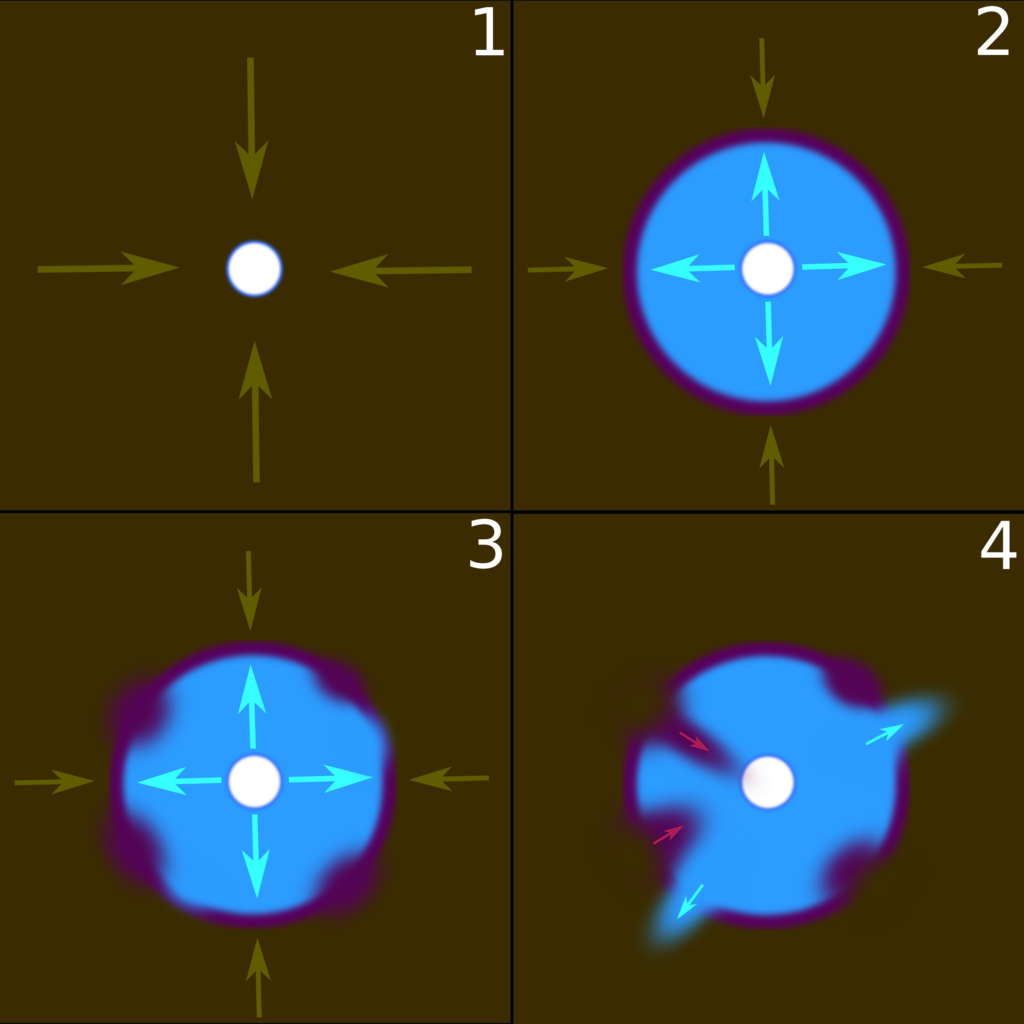
Pass observations also show that massive protostars have gas and dust disks just like their lighter siblings. Again however, these observations are low resolution. This prevents astronomers from finding features in the disks. These features could be warps in the disk which indicate planets or a stellar companion orbiting the star.
Monoceros R2
Jimenez-Serra’s team looked at a star forming cluster called Monoceros R2 in the constellation of Monoceros or the unicorn. This star cluster is very young and thus still has massive stars forming inside it. It is also deep within a giant molecular cloud. This means infrared and microwave wavelengths have to be used observe it.
Using infrared, astronomers see that pockets of the cloud have been ionized by young massive stars at the center of these pockets. Many of these massive stars are less than 10 million years old. This gives the astronomers an opportunity to study them and in doing so learn more about what happens around young massive stars.
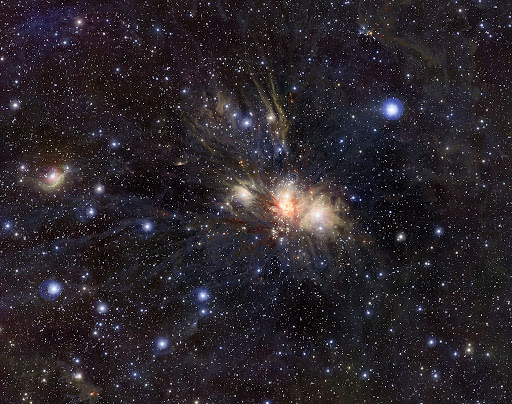
For this study, the astronomers look at MonR2-IRS2 which is a pocket of ionized gas with a massive star in the center. This object strongly emits infrared and microwaves allowing scientists to study it in those wavelengths.
A word about masers
The astronomers chose IRS2 as it is a maser. Objects become masers when high energy radiation hits certain atoms in the object. When this happens, their electrons jump to higher energy levels.
Later, more radiation knocks the electrons to lower energy levels releasing new photons. These photons trigger other energized electrons to drop back to lower energy levels releasing yet more photons.
The new photons have the same wavelength as the older photons. They are also in phase with them. This amplifies the radiation coming from the maser making the object easier to see.
The star
As a maser, MonR2-IRS2 has strong and narrow emission lines in it’s spectrum. This makes it easier to measure doppler effects and thus the speed of the material moving around the star.
Jimenez-Serra’s team used the orbital speed and distribution of the material in the disk around the star to measure it’s mass. They found that the star is 15 times the mass of the sun. This verifies previous results based on the star’s luminosity. It also validates the idea that this star is a B0-type star.
These stars are important as they not only influence the star formation region around them in their young age. They also produce the elements heavier than helium up to iron at the end of their lives. These are important elements for life to exist.
Hot ionizing winds
Jimenez-Serra’s team detected maser emissions from low density gases which appear to be spread out. They also have high doppler shifts. This can only be explain by an ionized wind blowing off the disk.
The astronomers calculate that this ionized wind ejects an amount of material equal to that of 9% of the earth’s mass every year. By comparison, our sun’s solar wind only ejects mass equal to 0.0000000006% earth masses per year.
It is worth noting that the ionized wind of MonR2-IRS2 comes from the inner edge of the disk. This inner edge is between 10 to 13 AU from the star. According to earlier studies, this means the winds are created by magnetic fields interacting with the disk. Ionizing radiation hitting the disk cannot explain this as one would expect with massive stars.
The disk
The astronomers can infer the shape of the disk around MonR2-IRS2 based on the results obtained from their observations. They found that a torus shape disk with a double cone shaped inner wall will reproduce the results obtained. The inner wall of the disk is assumed to be ionized as there is an ionized wind blowing off it.
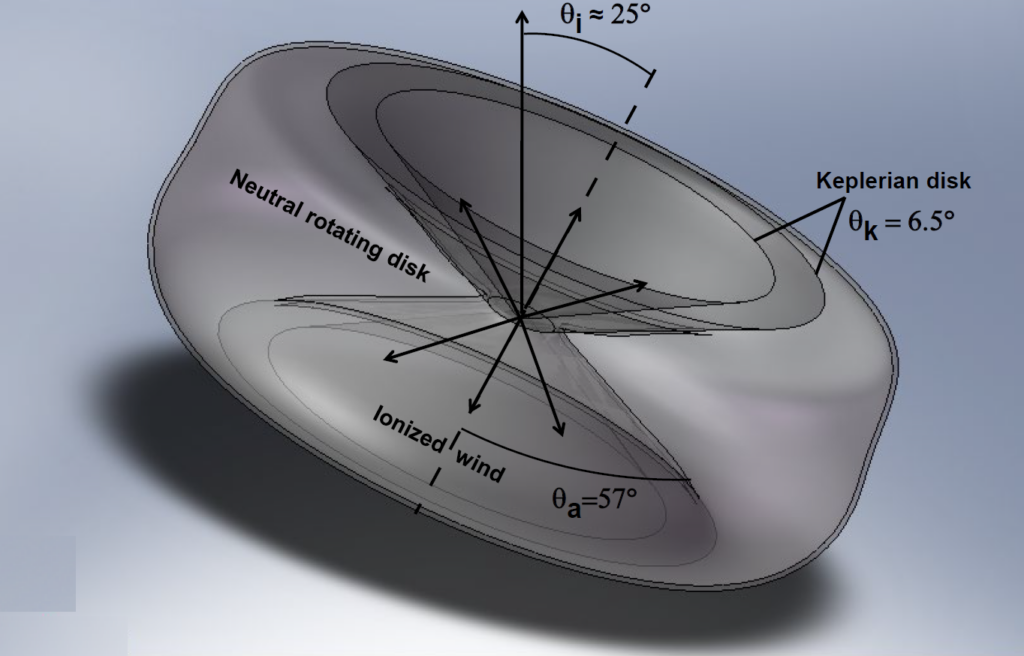
The ionized portion of the disk is located on the surface of the cones. Inside the cone is where the ionized winds blow out from. The disk main part of the disk is mostly atomic hydrogen gas.
The total mass of the disk is between 0.0224% to 0.0424% the mass of the sun. This is astonishingly small for a star still fully surrounded by gas. Such amount of material is not enough to form a planet such as Jupiter. For comparison, HL Tauri, a pre-main-sequence star as massive as the sun has a disk that is around 10% the mass of the sun.
It maybe that planets have already formed. Warps detected in the disk support this idea. It could also explain why the inner edge of the disk is 10 to 13 AU from the star. This does not confirm the existence of a planet. Jimenez-Serra’s team said that the result could also be explain by a binary companion or the disk rotating in a different axis then the star’s magnetic field.
Conclusion
As scientists continue to study star formation, our knowledge of how massive stars form will increase. This is very important as massive stars have a huge influence on the star clusters they are apart of. It thus helps us to discover how massive stars in the early stages of life affect stars like our sun when they were young.
References
https://arxiv.org/abs/2006.15853